When you sow the seeds of tomatoes you are dreaming of sweet and healthy tomatoes but sometimes you get poor-quality tomatoes. This happens due to the poor quality of the soil. Before planting tomatoes, you should do soil tests so you know how to improve their quality.
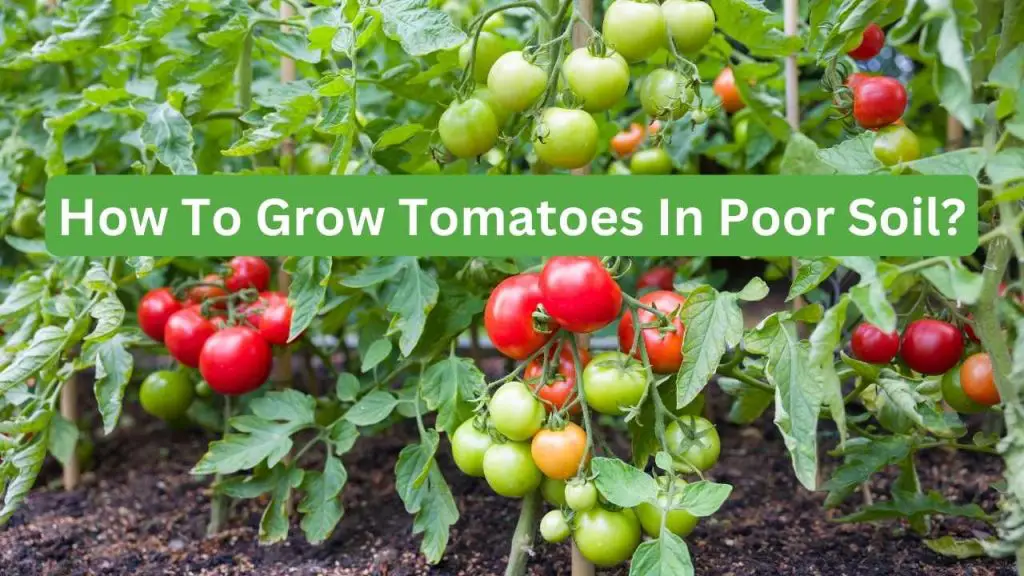
What Is The Best Soil For Growing Tomatoes?
The ideal soil for growing tomatoes must contain minerals and micronutrients such as magnesium, calcium, potassium, and phosphorus.
Just like other vegetables tomatoes also love to grow in fertile, well-drained, and loamy soil. The perfect pH for growing tomatoes should be between 5.8 to 7.0. Tomatoes adjust in all types of soil but they can’t thrive in heavy clay soil.
The soil you use for growing tomatoes has an impact on the flavor. Tomatoes can adjust in most types of soil but not in poor soil. For juicy and nutritious tomatoes, it is better to use loamy and well-drained soil because it will produce flavorsome tomatoes.
Tomatoes get robust growth when they receive desired organic matter from the soil. If you are growing your tomato plants in raised beds, containers, or pots then you can easily fill them with a high-quality potting mix that contains all the essential nutrients according to the needs of the tomato plants.
How To Take A Soil Test For Growing Tomatoes?
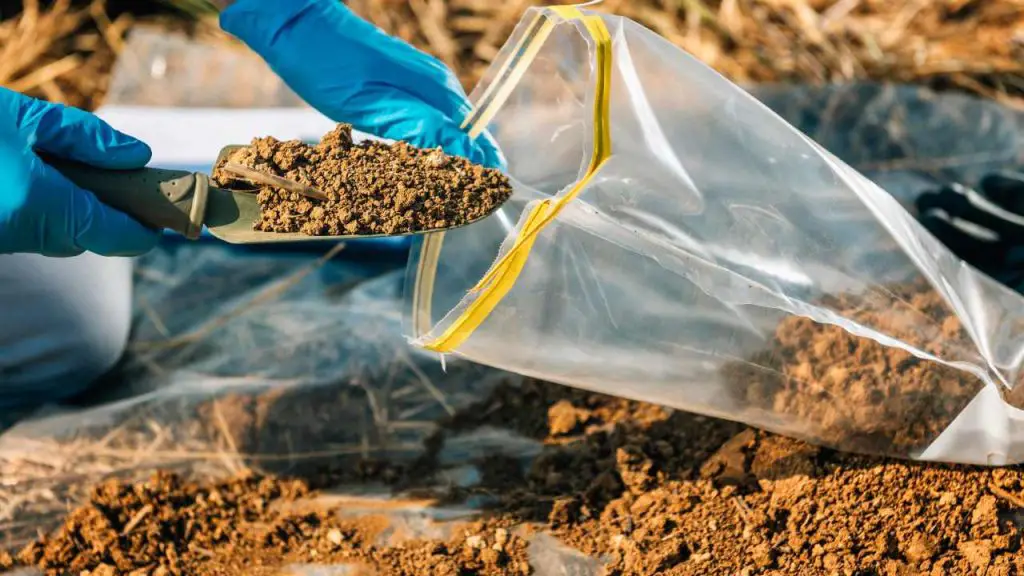
Before planting tomato plants in the soil you should perform a soil test. A soil test will help you to determine the deficiencies and pH of the soil. You can improve the quality of the soil when you know about the need for appropriate nutrients in the soil. So you can make the soil more tomato friendly and nutritious.
You can easily do the soil test and check the pH, phosphorus, nitrogen, and potassium levels in the soil. You need a soil test kit. There are different varieties of soil test kits available from many manufacturers.
An electronic soil meter is also a great option for checking the pH readings, nutrient level, and water content in the soil. Your money will not be wasted if you invest it in buying electronic meters because it will help you check pH and water levels regularly during the growing season.
This one-time investment will help in producing healthy and fresh tomatoes for your kitchen
If you think you can’t do that, then you can use a local lab. They will charge you a small fee and provide a full report of the soil analysis of your garden. You will get more data about the pH and nutrient readings of the soil of your growing area.
The ideal pH for growing tomatoes is between 6.0 and 6.8. It means they love to grow in acidic soil. A soil test will tell you about the acidity of the soil.
Never make assumptions and do a perfect soil test for the health and growth of tomato plants. The test result will also tell you about the lack of nutrients in the soil.
For instance, if the result shows that the soil needs calcium then you must add those things that fulfil this deficiency. You can use eggshell powder and add it to the planting hole at the time of transplanting the young seedlings.
Eggshells are a good source of calcium. It is suggested that you should never add amendments without a soil test because if your soil doesn’t need calcium then it will disturb the nutrient balance.
Why It Is Hard To Grow Tomatoes In Poor Soil?
When the soil of your garden is very sticky and lumpy then you will not have juicy tomatoes. Growing tomatoes in poor soil are very difficult and tricky because, for a juicy and satisfying crop, you need easy-to-till soil.
You need to do hard work to achieve your goal. Poor soil needs to be amended because it holds so much moisture that causes waterlogging and results in root rot and many fungal diseases.
Heavy and sticky dirt is impossible to dig even if you are using a sharpened spade. Poor clay soil is very hard and compact. Seeds of tomato plants never sprout in such soil because seeds need water for the germination process.
In case, you are transplanting young seedlings of tomato plants in the poor soil of your garden. Seedlings can’t develop a strong root system and are trapped in this poor soil.
It holds excess water and as a result, the water doesn’t penetrate the soil. In such a situation, the roots of tomato plants will not get water on time. when the growth of the roots stops then as a reserve the plant will die.
Just like water, other minerals are also trapped in the poor soil which means tomato plants can get all the valuable nutrients if you follow some gardening techniques.
Poor clay soil can become a rich source of nutrition for tomato plants if you amend and manage irrigation during the productive months. A layer of mulch also helps to improve the quality of the soil.
Keep Reading
- How Many Tomato Plants In A 4×4 Raised Bed?
- How To Grow Cherry Tomatoes In A Greenhouse?
- How To Plant Tomatoes In Ground?
Selection Of Site
The selection of the site is very important for growing tomatoes in your garden. The site you choose must receive 6 to 8 hours of sunlight. Sunlight plays a very important role in the production of fruits.
If you grow tomato plants in a shaded area then you will not get the desired yield. All your hard work will be wasted if you do not choose a perfect site for tomato plants.
An ideal sunny location makes it possible for tomato plants to produce fresh and juicy fruit for you.
Prepare The Poor Soil For Growing Tomatoes
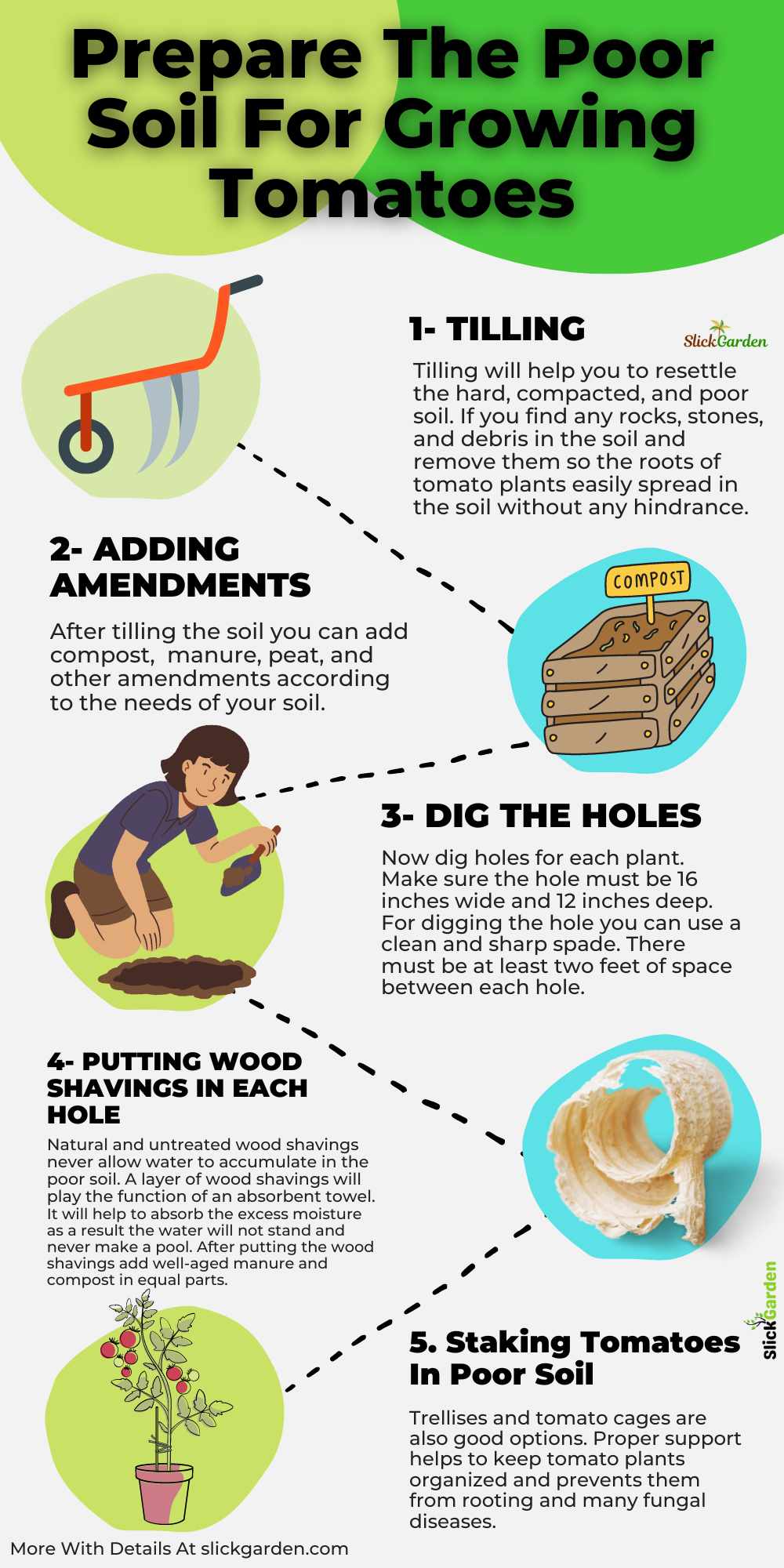
Following are the simple and easy steps for preparing poor clay soil for growing tomatoes.
1- TILLING
A soil test will tell you about the nutritious level of your soil. If you have poor soil in your vegetable garden then it is recommended that you should till it before planting.
Tilling will help you to resettle the hard, compacted, and poor soil. If you find any rocks, stones, and debris in the soil and remove them so the roots of tomato plants easily spread in the soil without any hindrance.
2- ADDING AMENDMENTS
After tilling the soil you can add compost, manure, peat, and other amendments according to the needs of your soil.
3- DIG THE HOLES
Now dig holes for each plant. Make sure the hole must be 16 inches wide and 12 inches deep. For digging the hole you can use a clean and sharp spade. There must be at least two feet of space between each hole.
4- PUTTING WOOD SHAVINGS IN EACH HOLE
After digging the holes, the next step is putting wood shavings in each hole. Make sure you are not using treated and walnut wood shavings.
Natural and untreated wood shavings never allow water to accumulate in the poor soil. A layer of wood shavings will play the function of an absorbent towel.
It will help to absorb the excess moisture as a result the water will not stand and never make a pool. After putting the wood shavings add well-aged manure and compost in equal parts.
You can also add gypsum if your soil needs it. Now mix all the components with the help of your hand or fork. This mixture is very nutritious for tomato plants because it offers aeration for the roots.
Keep Reading
- How To Grow Beefsteak Tomatoes In Pots
- Everything You Need To Know About Growing Tomatoes In Grow Bags
- Put These Things In Planting Holes For The Best Tomatoes Harvest
Planting Young Tomato Plants In The Amended Poor Soil
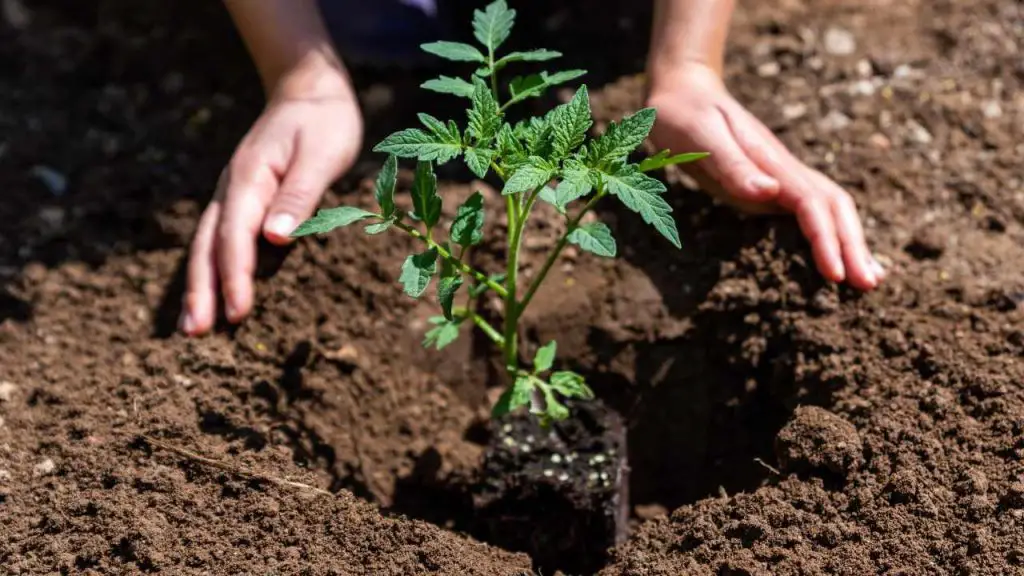
It is better to prepare tomato seedlings indoors and transplant them outdoors in your garden. The ideal time for transplanting tomato plants is after the danger of the last frost date.
If you don’t know about the last frost date in your area then you can ask any local nursery they will guide you.
Now dig the planting holes in the ground for young tomato plants. Make sure each hole must be 6 inches deep. There must be enough space between two tomato plants because it will encourage the growth of a strong root system.
When the roots of each tomato plant get proper room to spread then the cultivars grow into large plants.
Staking Tomatoes In Poor Soil
Tomato plants need proper support so you must install take at the time of transplanting the seedlings. The best time for staking is when your plant is one foot tall.
Trellises and tomato cages are also good options. Proper support helps to keep tomato plants organized and prevents them from rooting and many fungal diseases.
It will also save tons of space in your vegetable garden. The little tiny monsters pests and insects will not invade your tomato crops when you install stakes. When your fruit is ready to harvest then you can easily pick the fruits without facing any difficulty because of his staking.
When To Mulch?
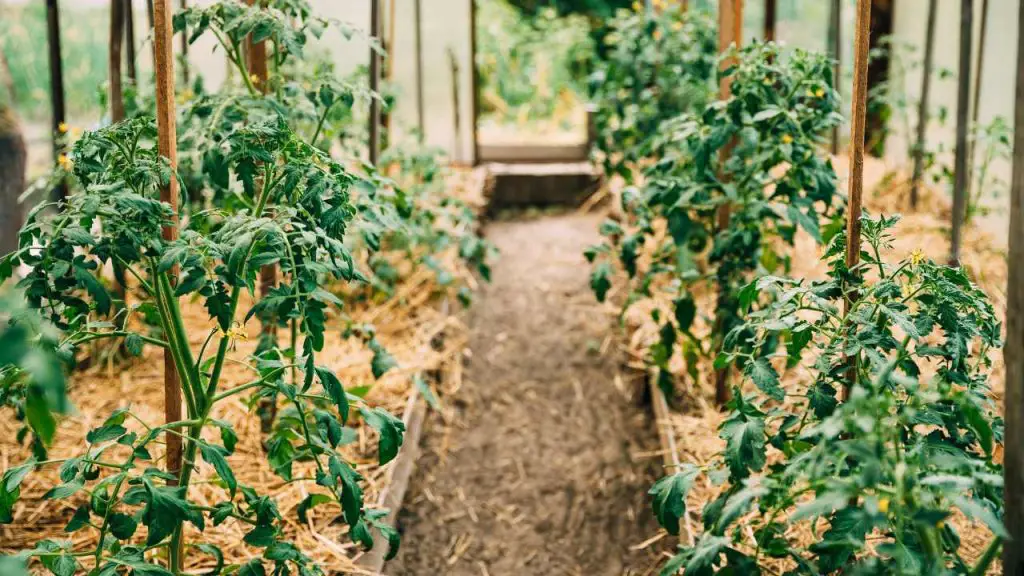
When you apply a layer of mulch then it will help to maintain the moisture level of the soil. Mulch never let the soil dry out. Another advantage of mulching is that it prevents your plants from weeds.
Weeds are unwanted plants that steal nutrients from the soil and as a
result, there is a competition between the plants and the weeds for nutrients.
You can use straw, leaves, and grass for mulching as these are the best options. Make sure the thickness of the layer must be 8 inches.
Watering
You should maintain a frequency of water for your tomato plants to keep them healthy. You should regularly examine the soil if it feels dry then water the plants.
Tomato plants need deep watering so make sure the soil must be 6 to 8 inches moist. When the fruits start developing then your tomato plants need more water so you should be careful. Make sure there should be no uneven watering as it can destroy the plant.
Keep Reading
- How To Grow Tomatoes In A Vertical Garden?
- Can You Grow Tomatoes From Supermarket Tomatoes?
- How To Grow Tomatoes From Seeds In Containers
Pests And Diseases
Pests and diseases are a threat to tomato plants. You should be careful and regularly examine the tomato plants. If you feel that your plant is facing any problem then figure it out.
Aphids, cutworms, flea beetles, and hornworms are common pests. You should clean your gardening tools so the disease will not spread to the plants. If you find any infected you should remove the infected part from the plant.
Harvesting
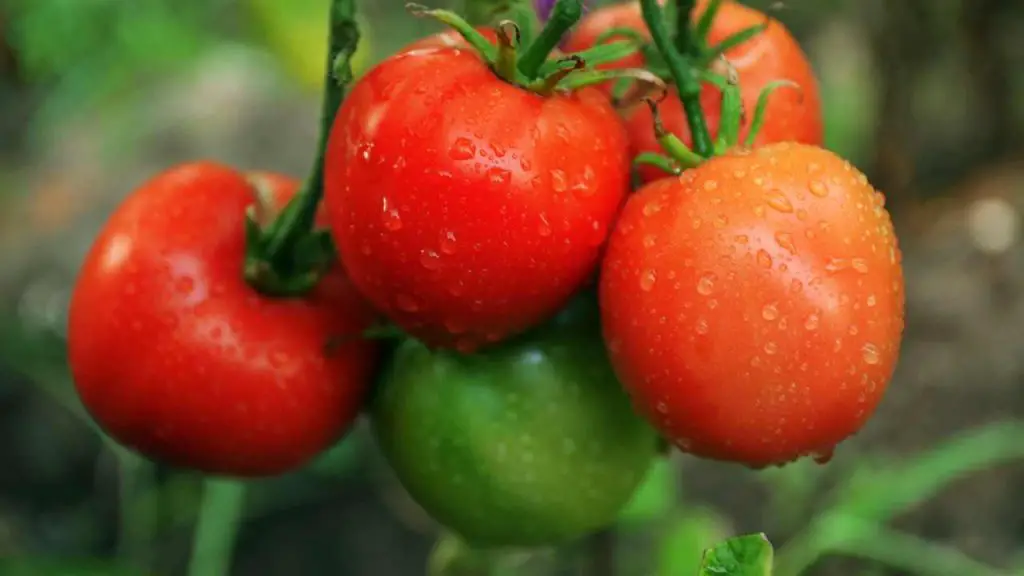
The ideal temperature for ripening tomatoes is about 75 degrees Fahrenheit. If the temperature is consistent you can leave the fruit on the vine for the best taste.
In case the temperature drops then you can bring green tomatoes indoors and store them in a cool and all place in a brown paper after one week. You will see they will turn red.
When you store unripened tomatoes in the refrigerator then you will not get the desired flavor.
